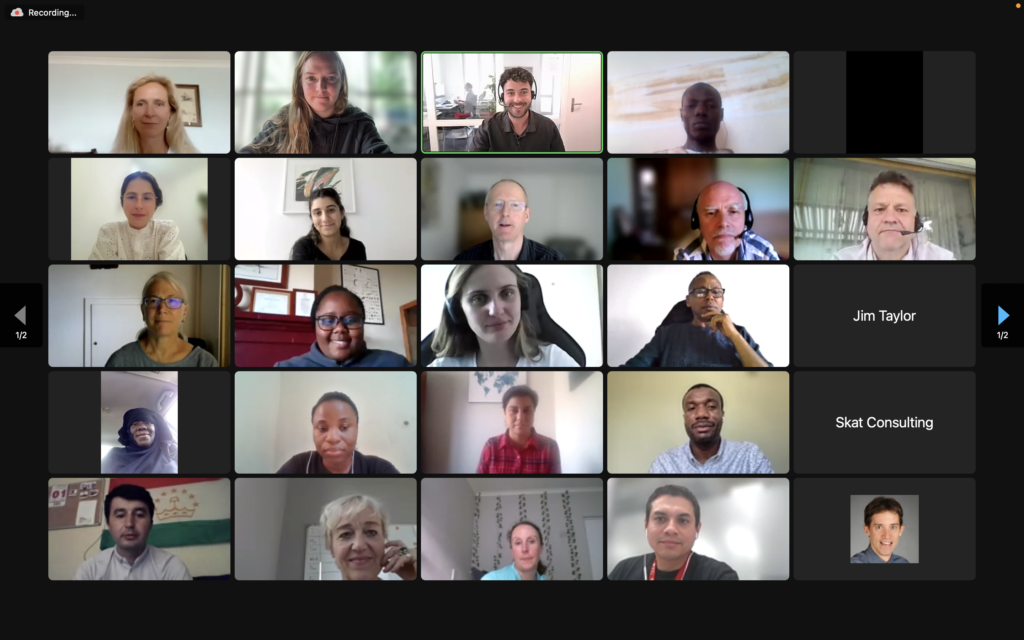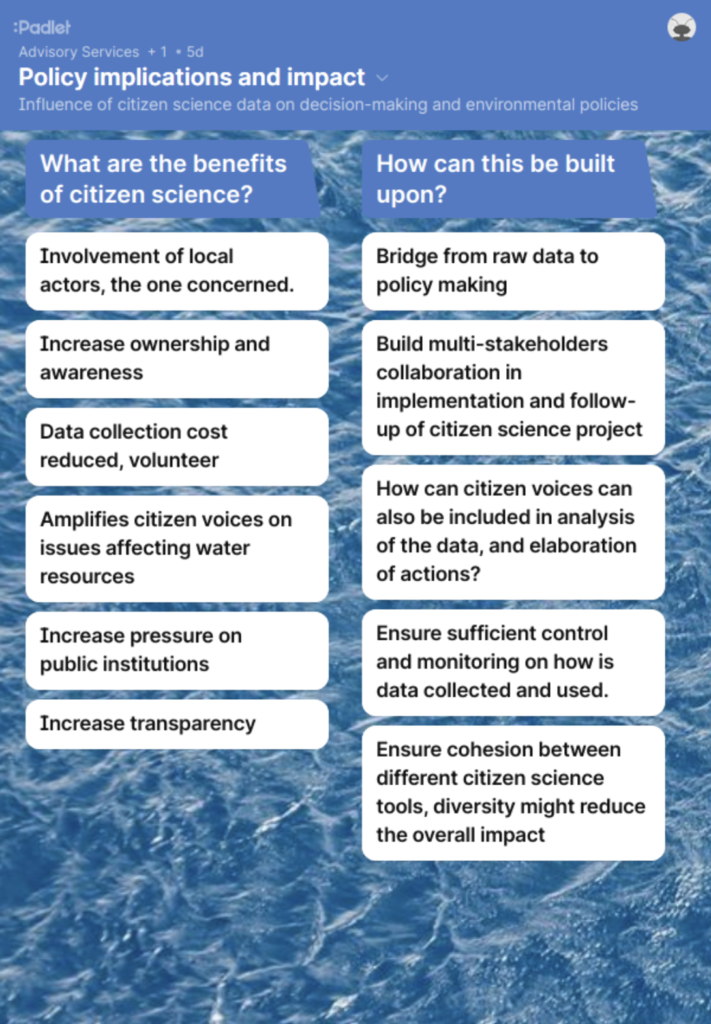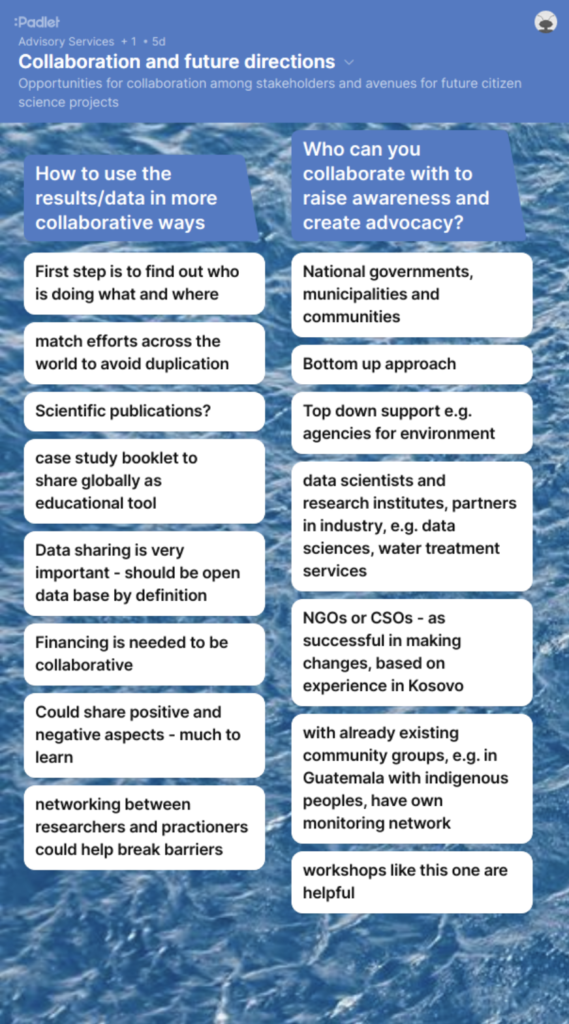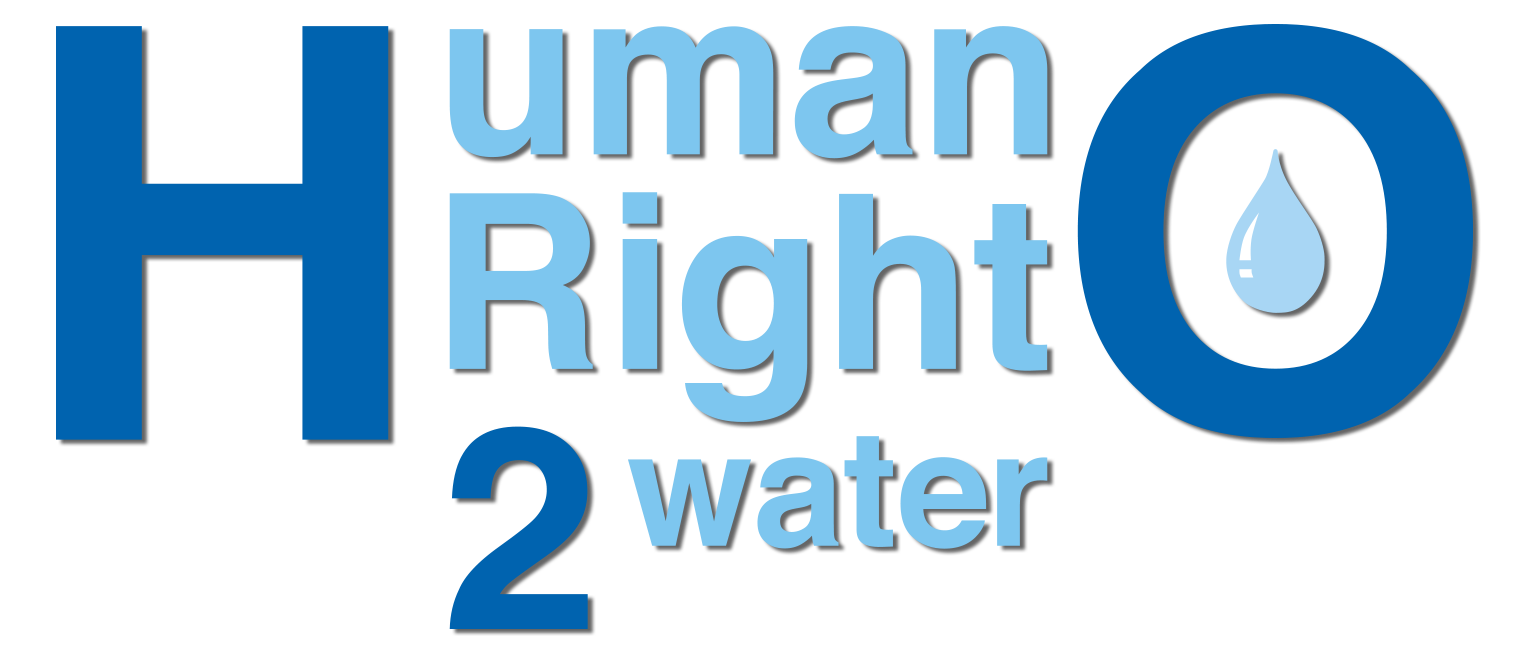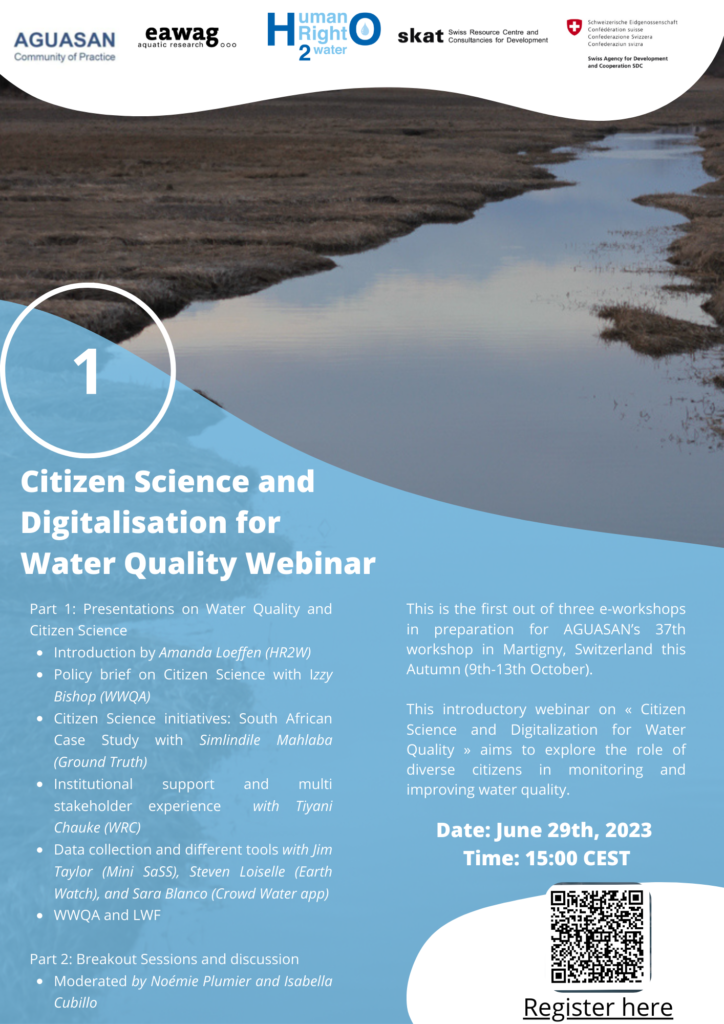
Thursday 29 of June, HR2W co-hosted a webinar with AGUASAN as part of their e-learning journey leading to a hybrid workshop in Martigny this October (9-13). The webinar showcased different methodologies and case studies for citizen science and the way it can help communities guarantee the human right to water and sanitation. The webinar had a turnout of 50 attendees from different backgrounds, civil society (28%), academia (26%), government (13%, and others (23%). The webinar was presented in two sessions: Amanda Loeffen (HR2W) introduced the topic and experts presented their experience and technologies for gathering data through citizen science: Izzy Bishop (WWQA), Simlindile Mahlaba (GroundTruth), Tiyani Chauke (Water Research Commission), Jim Taylor (miniSaSS), Steven Loiselle (Earth Watch), and Sara Blanco (Crowd Water App). The second session included breakout rooms facilitated by Noémie Plumier and Isabella Cubillo, in which the participants discussed the challenges, opportunities, stakeholders, and action points to integrate citizen science in different communities (see figure 9 below).
The AGUASAN e-learning journey, and how this topic fits into the programme, was presented by Riff Fullan from Helvetas.
Citizen Science and Water Quality Monitoring
“Collection and analysis of data relating to the natural world by members of the general public typically as part of a collaboration project with professional scientists” – Amanda Loeffen
Amanda Loeffen (HR2W) and Izzy Bishop (WWQA) introduced the concept of citizen science and how it is being used to support SDG 6. It involves the collection and analysis of data relating to the natural world by members of the general public, typically as part of a collaboration project with professional scientists. It’s a first step and an opportunity for sustainability.
There are several layers of impact in with Citizen Science:
- Education and awareness
- Use this information to identify pollution hotspots or changes in water quality that might otherwise not be observed
- Engage local authorities and communities on initiatives to monitor water data over time with a goal to improve water quality
- National and global reporting through SDG 6.3 point 2 which can be supported by this system and help develop more broad ranging solutions
Huge gaps in data for this target are seen because high income countries are scaling back monitoring efforts and low income countries have little monitoring infrastructure. The World Water Quality Alliance (WWQA) was created as a working group of UNESCO to promote the use of citizen science to collect data and to monitor progress towards SDG 6.3.2, the taget for improved water quality.

Level 1 parameters : nitrogen, phosphorus, oxygen, salinity or conductivity and pH
Level 2 parameter : other physical chemical indicators or biological indicators
Tools and methodologies
“The pollution of a single water source can have a negative effect and an impact on many households” – Simlindile Mahlaba
Presentations from Simlindile Mahlaba (Ground Truth), Tiyani Chauke (WRC), Jim Taylor (miniSaSS), Steven Loiselle (Earth Watch), and Sara Blanco (Crowd Water App) showcased different case studies and methodologies in which citizen science can be monitored and implemented.
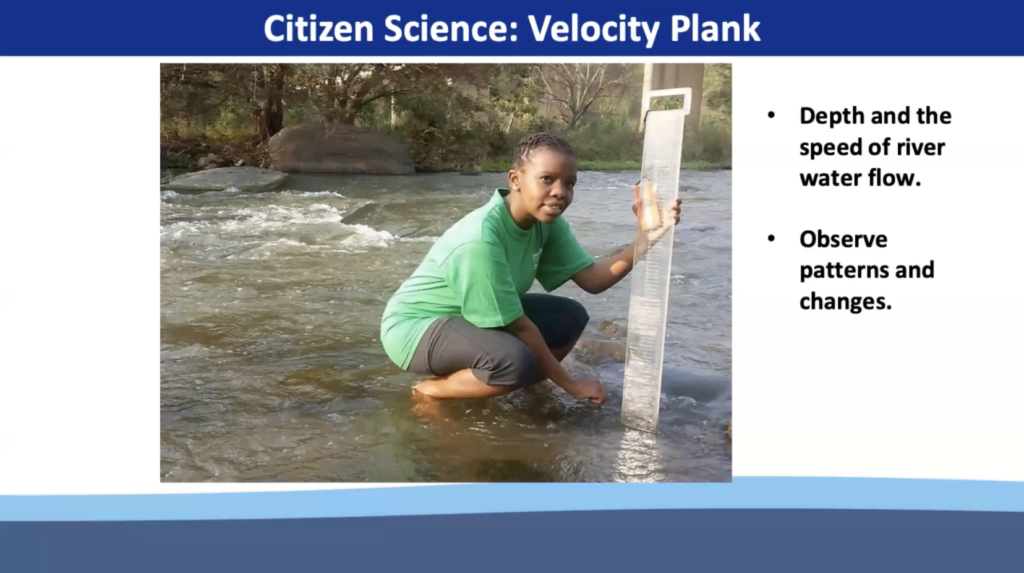
Simlindile Mahlaba from Ground Truth presented several methodologies that are being used in South African communities for water quality monitoring. Among these ideas there is the Velocity Plank, clarity tubes for WWTW effluent monitoring. She introduced the environmental champions that lead community activities for environmental conservation.
Additional information can be found here: http://www.groundtruth.co.za/
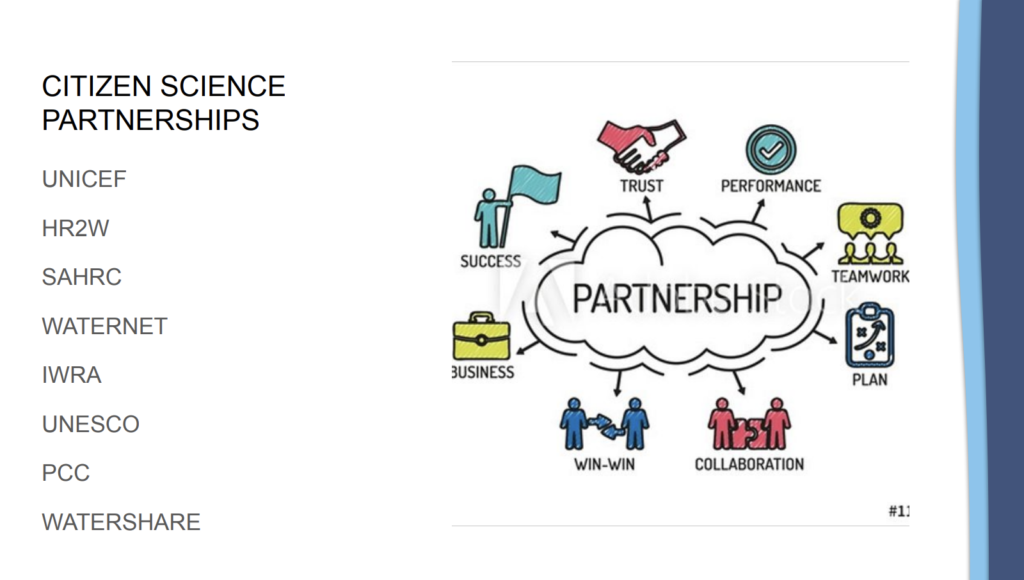
Tiyani Chauke from the Water Research Commission talked about the cooperation needed to work in citizen science. It is important not to duplicate work, but instead to empower communities, amplify the resources for citizen science, and encourage partnerships to share knowledge.
Additional information can be found here: https://www.wrc.org.za/
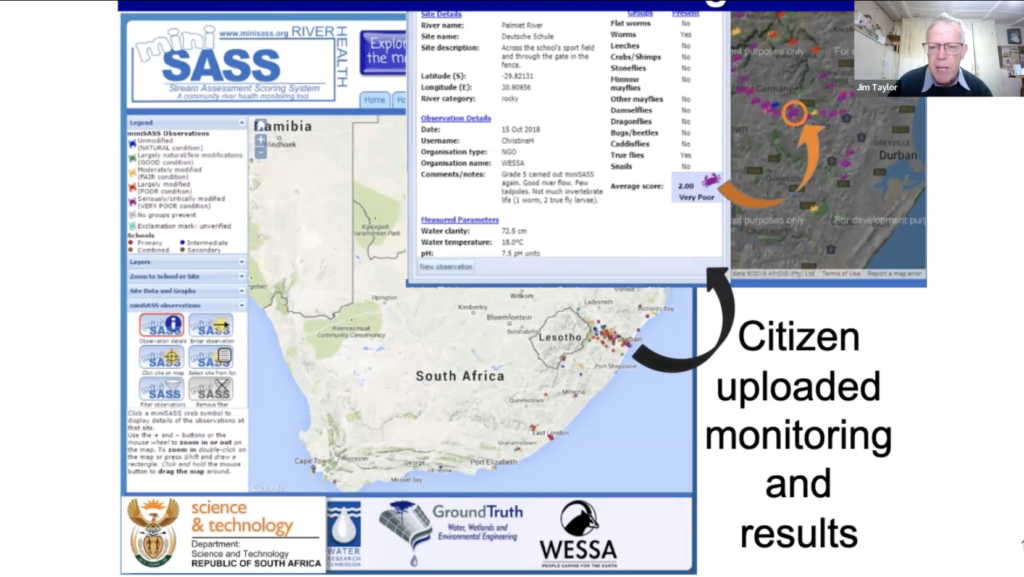
Jim Taylor (University of KwaZulu-Natal) presented an ecological monitoring tool that guages the health of rivers by sampling invertebrates. The miniSaSS tool functions by collecting samples from rivers, identifying species using the dichotomous key and then uploading the information to the app to rank the river’s water quality. Through google maps the information can be shared, and the quality can be tracked by location and over time.
Additional information can be found here: miniSaSS information

Steven Loiselle (EarthWatch) presented the approaches used by the Freshwater Watch across Europe. He presented the measurement methods that are used to understand different quality parameters of local water bodies. These tests can be used to identify problem hotspots for future action.
Additional information can be found here: https://earthwatch.org.uk/ and https://www.freshwaterwatch.org/
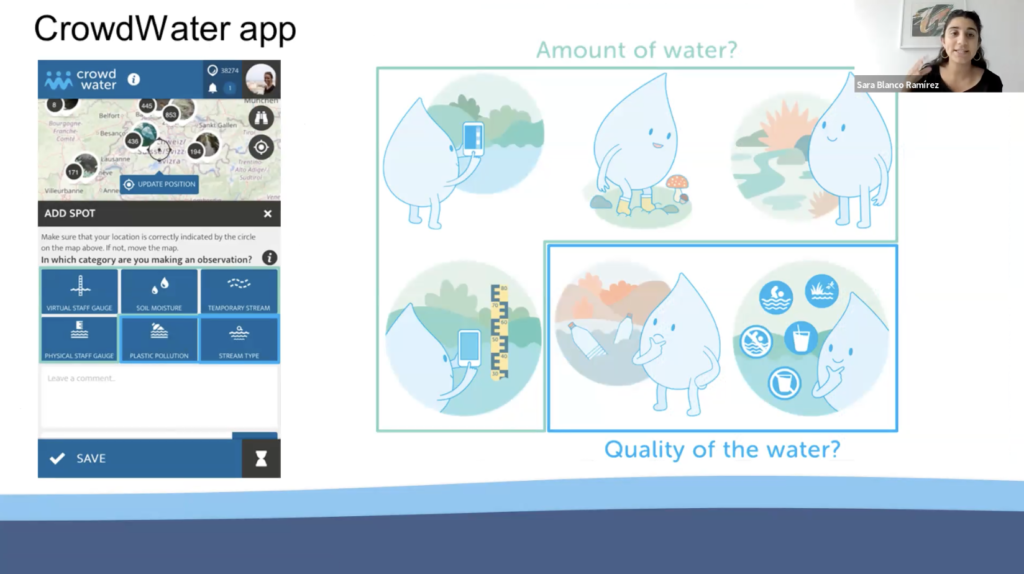
Sara Blanco (CrowdWater) presented the CrowdWater App, which is a mobile application used in a global citizen science project to collect non-sensor based data. She highlighted six categories of information that the app can help gather: virtual staff gauge, soil moisture, temporary stream, physical staff gauge, plastic pollution, and stream type.
Additional information can be found here: https://crowdwater.ch/en/app-2/
“Teaching the youth and civil society helps to carry this knowledge and skills to learn it for their lives and the steps to achieve environmental sustainability.” – Sara Blanco
